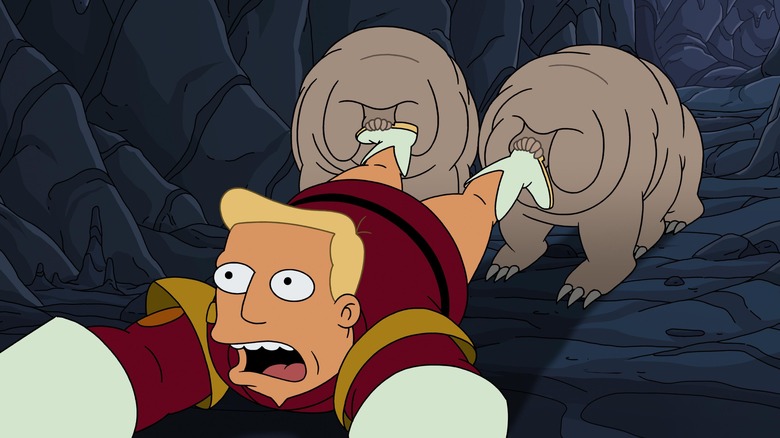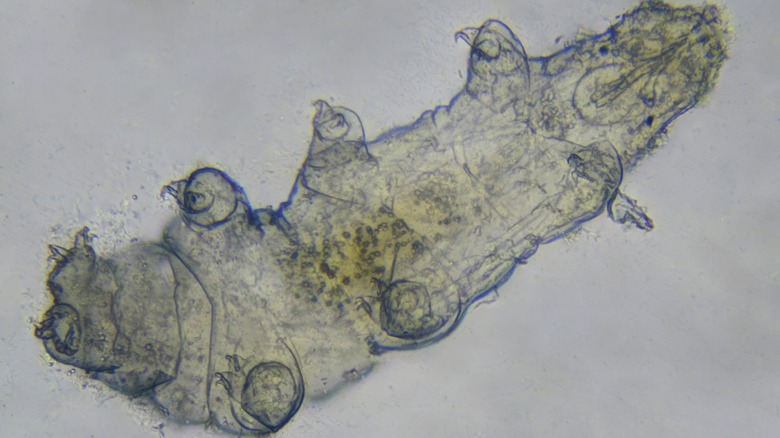Futurama Season 11: Are Tardigrades Real? How Accurate Is The Space Bear?
Contains Spoilers for "Futurama," Season 11, Episode 2 — "Children of a Lesser Bog"
Fictionalized versions of real-life creatures are no strangers to the science-loving world of "Futurama." So while the microscopic, body-improving worms that assisted Phillip J. Fry (Billy West) in "Parasites Lost" obviously don't exist and space bees don't roam the night skies, the tardigrades that appear in "Children of a Lesser Bog" are all too real. Only they're much, much smaller in reality.
Tardigrades are microscopic organisms nicknamed "water bears" — ergo their being studied within the episode by a scientist using similar techniques to the way that wildlife researchers keep an eye on bears. In real life, the tiny organisms are extremely well traveled; Tardigrades have made it to outer space, can survive radiation, and are just as happy growing in the dirt as they are in water ... and in lava fields. They can also reproduce either with a partner or asexually, which means their family habitats are not exactly like the ones portrayed on "Futurama." In fact, they can live up to 30 years without fluids — a fact that makes the show's version of the species and their quest for human food particularly ironic – and have a penchant for moss. They've existed for 600 million years — and yes, that makes them much older than the dinosaurs.
Tardigrades are beneficial to the environment
Tardigrades may have been one of the first organisms to live on dry land and have all of the adaptability necessary to survive a nuclear holocaust — which explains why Kif Kroker (Maurice LaMarche) and Zapp Brannigan (Billy West) have such a tough time defeating them in "Children of a Lesser Bog." They also serve an extremely important role in the ecosystem; Tardigrades exist to help feed larger organisms, which in turn feed larger organisms. Ironically, in spite of their mighty indestructibility, their lifespans only stretch over a few months.
Naturally, "Futurama" isn't the only TV show ever to fictionalize the water bear into a supernatural creature. "Star Trek: Discovery," for example, turned the seemingly innocuous creature into an incredibly ferocious creature dubbed the Ripper. The possibly-sentient creature managed to kill a single redshirt before the crew realized its vulnerability as a spore-like being made it vulnerable to the Discovery's hyperjumps. The Ripper ultimately goes into cryptobiosis, essentially falling asleep so deeply it can't hurt anyone else. Fortunately, the Tardigrades from "Futurama" are rewarded with a much kinder — and more fish-laden — fate.

